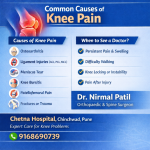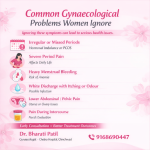Introduction
Low vision is a condition that affects millions of people worldwide, significantly impacting their daily lives. Unlike total blindness, people with low vision still retain some usable sight, but it cannot be fully corrected with glasses, contact lenses, medication, or surgery. Common activities such as reading, driving, cooking, or recognizing faces become challenging. For those experiencing low vision, it’s essential to understand its causes, types, and the solutions available to improve quality of life.
This blog explores low vision in detail, shedding light on its causes, how it affects individuals, and what can be done to manage it effectively.
What is Low Vision?
Low vision refers to significant visual impairment that cannot be corrected through standard measures like glasses, lenses, or surgery. People with low vision experience reduced visual clarity, contrast sensitivity, and limited peripheral vision, making everyday tasks difficult. It’s more common in older adults but can affect people of any age.
There are different levels of low vision:
- Mild Vision Loss: Difficulty in seeing fine details, even with glasses.
- Moderate Vision Loss: Trouble performing daily activities like reading or watching television.
- Severe Vision Loss: Extremely reduced visual acuity or field of vision, often requiring specialized vision aids.
Common Causes of Low Vision
- Age-Related Macular Degeneration (AMD):
AMD is one of the leading causes of low vision, particularly in people over 60. It affects the macula, the part of the retina responsible for central vision. People with AMD may experience blurred or distorted central vision, making tasks like reading, writing, and recognizing faces very difficult. Peripheral vision often remains intact. - Glaucoma:
Glaucoma damages the optic nerve, usually due to increased pressure in the eye. It often causes a gradual loss of peripheral vision, leading to tunnel vision if untreated. Since glaucoma progresses silently, regular eye check-ups are crucial to detect and manage it early. - Diabetic Retinopathy:
Diabetic retinopathy occurs when prolonged high blood sugar damages the blood vessels in the retina. It can cause blurry vision, dark spots, or even total vision loss if left unmanaged. People with diabetes are at a higher risk and should undergo regular eye screenings. - Cataracts:
Cataracts occur when the eye’s natural lens becomes cloudy, resulting in blurry, dim, or hazy vision. While cataracts can be surgically treated, untreated cataracts can contribute to low vision. - Retinitis Pigmentosa:
This inherited condition affects the retina and leads to gradual vision loss. Symptoms often include tunnel vision and difficulty seeing in low-light conditions. - Optic Neuropathy:
Damage to the optic nerve from poor blood flow, trauma, or inflammation can reduce vision clarity and peripheral vision. - Amblyopia (Lazy Eye):
In childhood, if one eye doesn’t develop properly, it leads to reduced vision in that eye, impacting overall sight quality.
Impact of Low Vision on Daily Life
Low vision can make even the simplest daily tasks seem daunting. Individuals may struggle with:
- Reading and Writing: Books, newspapers, and even digital screens may appear blurred or distorted.
- Mobility: Walking safely, navigating stairs, or driving can become hazardous due to reduced visual fields or depth perception.
- Recognizing Faces: Central vision loss makes it difficult to identify people.
- Performing Daily Chores: Cooking, sewing, or using tools that require precision becomes challenging.
- Emotional Well-Being: Low vision often leads to feelings of frustration, isolation, and dependence, impacting mental health.
The good news is that many solutions and support systems are available to help individuals adapt and regain independence.
Solutions for Low Vision
- Consultation with an Ophthalmologist:
The first step to managing low vision is consulting an ophthalmologist or low vision specialist. They can assess the extent of your vision loss and recommend suitable aids and treatments. - Vision Aids:
Assistive devices are designed to help people maximize their remaining vision. These include:- Magnifiers: Handheld or stand magnifiers help enlarge text and objects.
- Telescopic Lenses: Useful for distance viewing, such as watching TV or attending events.
- Electronic Magnification Devices: These use cameras to project enlarged images onto screens for easier viewing.
- Reading Aids: High-contrast and large-print books, as well as text-to-speech software, make reading more accessible.
- Lifestyle Adaptations:
Simple changes around the home or workplace can improve functionality and safety. These include:- Increasing lighting in key areas.
- Using high-contrast items like white plates on dark tables.
- Installing tactile markers on appliances.
- Training and Rehabilitation Programs:
Low vision rehabilitation teaches individuals how to use their remaining vision effectively. Specialists help patients adopt techniques like eccentric viewing, which relies on peripheral vision, and provide training with assistive devices. - Counseling and Support Groups:
Coping with vision loss can be emotionally challenging. Counseling and peer support groups offer encouragement, strategies for living with low vision, and a sense of community.
Prevention and Early Detection
While not all low vision conditions are preventable, regular eye exams are essential for early detection and treatment. Here are key steps to protect your vision:
- Get Regular Eye Check-Ups: Annual screenings help detect conditions like glaucoma, AMD, and diabetic retinopathy early.
- Control Chronic Conditions: Managing diabetes, hypertension, and cholesterol can prevent eye complications.
- Adopt a Healthy Lifestyle: Eat a balanced diet rich in leafy greens, omega-3 fatty acids, and antioxidants. Avoid smoking and limit alcohol consumption.
- Protect Your Eyes: Wear UV-blocking sunglasses to shield your eyes from harmful sun exposure.
Living with Low Vision
A low vision diagnosis can be life-changing, but it does not mean giving up independence or quality of life. With advances in medical care, assistive technology, and low vision rehabilitation, individuals can adapt and continue to pursue their passions.
The key is taking the first step—seeking help. Whether through a specialized ophthalmologist, low vision clinic, or support group, resources exist to help people maximize their remaining vision and lead fulfilling lives.
Conclusion
Low vision may be a significant challenge, but it is not insurmountable. Understanding its causes, seeking professional help, and embracing available solutions can transform lives. Early diagnosis and intervention play a critical role in preventing further vision loss and helping individuals adapt to the changes they face. Remember, vision loss does not have to mean life loss. With the right support, tools, and mindset, a clearer, brighter future is within reach.
If you or a loved one is experiencing low vision, schedule a consultation with a low vision specialist today. Together, we can work toward improving your vision, confidence, and quality of life. 👁️✨
For Consultation Contact us on 9168690448
Website – www.chetnahospital.co.in
Address – Chetna Hospital, Sambhajinagar, MIDC, G Block, Near Rotary Club, Chinchwad 411019
.
.
.
#hospital#pune#pcmc#chinchwad#medical#medicalservices#dryeyetreatment#dryeyerelief#dryeyedisease#dryeyetherapy#catract#catractsurgery#catracteyesurgery#catracteyeoperation#eyedoctor#eye#glaucoma#conjunctivitis#ophthalmologist#eyediseases#eyepain#pinkeye#hazeleyes#myopia#eyeinfection#amblyopia#dryeyesyndrome#eyeproblems#motibindu#motibinduoperation













